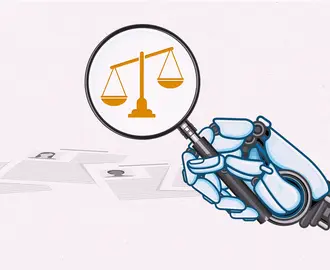Credit: Mimi Phan / iStock
Gen Z and beyond: A 4-part framework for cultivating future leaders in data
A recent survey found that chief data officers’ top priorities for 2023 include establishing clear and effective data governance, improving data quality, and building and maintaining advanced analytics and business intelligence capabilities.
The responses point to an urgency across industries to create data offices and educate the next generation of managers and analysts. One company that’s been working on this for two years is government contractor SAIC.
The OPEN Government Data Act of 2018, which required federal agencies to create chief data officer positions, inspired SAIC to follow suit by tapping Freddie Mac and JPMorgan alum Justin Magruder to serve as chief data officer, said Sara Jones, SAIC’s deputy chief data officer. But Jones and her colleagues faced an uphill battle: In its initial stages, the data office consisted of only four people, needed additional funding, and hadn’t proved its business value.
SAIC was able to grow that office to 60 employees, in part by putting a specific plan in place to hire, train, and promote Gen Z data professionals.
“On the CDO side, my team and I acknowledged that while we have extensive business knowledge, it had been many years since we had been in school,” Jones said during a presentation at the 2023 MIT Chief Data Officer and Information Quality Symposium. Recent graduates would be educated about the latest data science trends and new technologies. “We could leverage that and work together,” Jones said.
Jones and her team knew that when it came to hiring Gen Z college graduates, they’d be competing with big employers like Amazon and Facebook. To sharpen its competitive edge, the data office created the Future Leaders in Data program. Here’s a closer look at how SAIC onboards and trains Gen Z hires, and some considerations for organizations looking to build their own talent pipelines.
Building knowledge through block plans
The data office hosts block plans for its future leaders who have limited business experience and knowledge. In these blocks, team members spend time in different SAIC departments, such as finance and human resources, to learn about different aspects of the organization. These blocks could last anywhere from several weeks to a few months.
Block plans help data offices build relationships with the rest of the organization, Jones said, and outdated processes can also be spotted with the help of a fresh set of eyes. The future leaders who go out to those other areas “can train the folks how to do self-service reports, can tell them a little bit about data, and be your champion as well,” she said.
Voluntary rotations
The data office conducts rotational assignments for its future leaders. This includes having them participate in report writing, business analysis, data governance, and master data management.
The duration and scope of the rotations are flexible and adaptable to the preferences and strengths of each program member.
“We go with what the employee is liking, what they’re really excelling at, and where they fit the [best],” Jones said.
Mentoring and teaching
The Future Leaders in Data program continues to rely on mentorship from experienced leaders. Magruder makes himself available to the teams, and there’s shared learning between veteran program members and new recruits.
Related Articles
Jones said it’s important to have honest conversations with subject-matter experts and seasoned leaders so they not only understand the vision for the future leaders program but also the time commitment.
“It’s not a one-hour event and you’re done,” Jones said.
The Future Leaders program has also hosted reverse mentorships. For example, a former teacher’s assistant for a Python college course taught a weekly group programming class over Zoom, Jones said.
Hackathons and external competitions
SAIC’s data office “has a passion” for finding solutions to critical problems, Jones said, and hackathons are a way for the program’s future leaders to be exposed to these sorts of challenges. For example, the future leaders participated in a hackathon where they developed data visualizations for SAIC’s diversity, equity, and inclusion program.
Jones advised other organizations to participate in hackathons to improve hires’ skills and their ability to apply them. Additionally, hackathons should be run “similar to a request for proposal or a request for quote, so that you get a quick return,” Jones said.
The future leaders also apply their passion outside of the data office, Jones said. One of the teams won first place in the 2021 Virtual Virginia Datathon, while another was the runner-up in an internal SAIC competition.
“We really encourage internal competitions and external competitions within this program,” Jones said, adding that other organizations can look online for external competitions.



